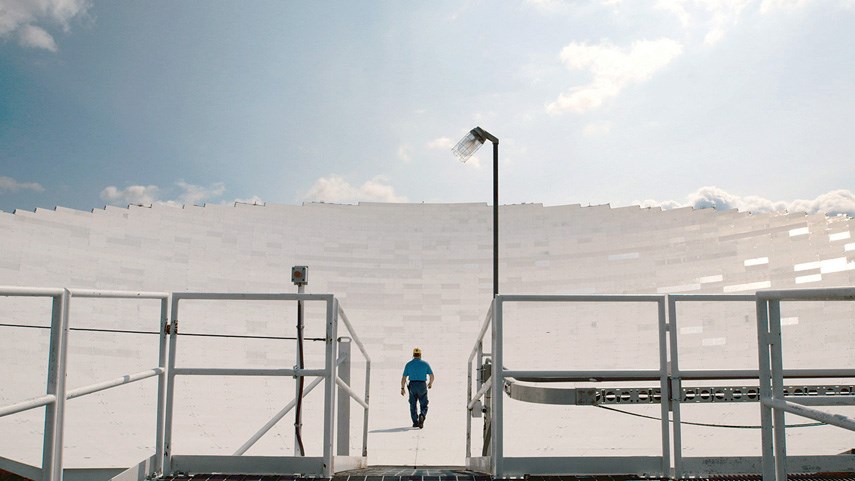DOXA Documentary Film Festival runs May 3 –13. Tickets are available online at doxafestival.ca.
Quiet. Please.
They came from New York City, small-town Ontario, Iowa, even from across oceans to a 13,000 square-mile plot in the West Virginia mountains in search of silence. It was the silence of the National Radio Quiet Zone, that they hoped would cure the heart palpitations, nausea, and the skin-tormenting burning that seemed to jump to their bodies from Wi-Fi hot spots.
The West Virginia zone was founded to guard the Green Bank Telescope, a massive dish that allows humanity to wiretap the cosmos in the hopes of finding incriminating evidence of the Universe’s creation in a stirring in the Milky Way or a rustle around the Great Globular Cluster in Hercules.
Because other broadcasts in the zone are limited to a single AM radio station the town has become a safe space for men and women who believe they suffer from electromagnetic hypersensitivity.
Speaking from a studio in the west end of Toronto, filmmaker and former Handsworth student Daniel Marc Froidevaux recalls working toward his master’s degree when he found himself struck with the idea of a town without cell service.
And so, “with very little planning,” Froidevaux and co-director Elisa Gonzalez headed south to meet the people and see the sites that would populate The Quiet Zone.
The resulting 45-minute documentary captures the EHS sufferers for whom the town is both respite and resistance against the conquering force of Wi-Fi.
“These people are generally in a place of extreme discomfort and illness and they’re just looking for anything, or any place, where they start to feel better,” Froidevaux says.
But elsewhere in town radio astronomers tilt the telescope toward the stars as we hear radio waves that buzz and clang and conjure the shrieking cry of a vengeful cappuccino machine.
“All we can do is receive what the Universe gives us,” a scientist explains in the film.
They can’t exactly experiment, he says. Instead, they clutch data that falls to Earth and try to decipher just what’s: “out there.”
With a $41,000 budget that came entirely from arts council grants, Froidevaux says they couldn’t document life in town as it unfolded. Instead, they took a snapshot of the relationship between tower and town.
The town’s isolation has likely helped preserve traditions that otherwise would’ve been swept away or altered by cultural collision. But when the town’s old timers square dance, the dance moves represent Appalachian traditions that can now be found only in that town, Froidevaux says.
The cause of that isolation, of course, is the massive radio telescope, which resembles the ultimate satellite dish.
“We were struck by . . . this kind of incredible, architectural beauty of this structure,” Froidevaux says of the telescope.
That beauty is shot with “considered, stark framing.”
But in the interview scenes the handheld camera comes to life in a bid to convey “some of the fragility of (the residents’) situation.”
Double-blind studies of EHS patients have shown their symptoms – which are not disputed – aren’t correlated with electromagnetic frequencies, according to the World Health Organizations.
Causes for EHS have variously been attributed to flickering fluorescent lights, stress, and psychiatric conditions.
“We’re told we’re imagining things,” a woman says in the film, explaining that she was once so ill her weight dipped to 77 pounds.
“They are forced into a situation where they need to figure out their own way of healing,” Froidevaux says, noting that once medical hope is exhausted, many patients seek alternative health care or perform their own diagnosis.
Froidevaux says he didn’t note the lack of electricity in the air.
“I can’t say that I feel anything different there than I feel in another, beautiful natural part of the world.”
By employing several quiet stretches in the documentary, Froidevaux and Gonzalez offer plenty of space for audience members to draw their own conclusions. But for the young filmmakers, the film is about seeing possibilities of technology not necessarily glimpsed yet.
Too often, the way technology is used becomes the definition of that particular technology.
“We spend a lot of time talking about what might be wrong with technology,” Froidevaux says. “What we fail to do often, I think, is think about what is the best use for the stuff that we already have.”



